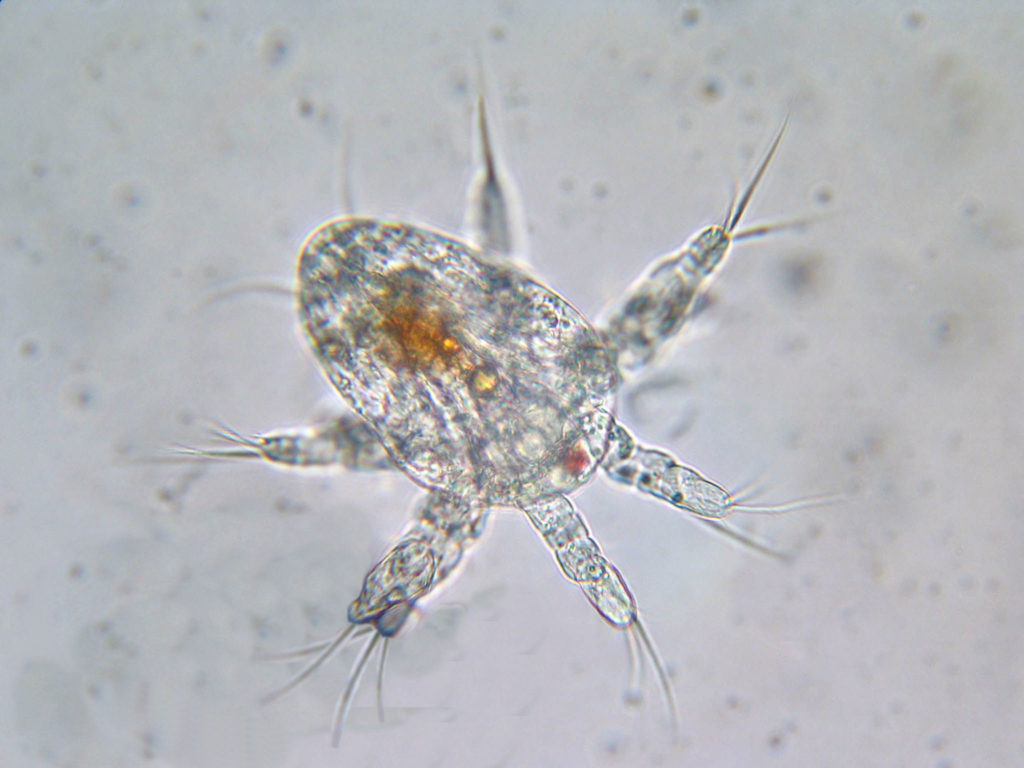Sind hopperlings im Shrimp Aquarium harmful? How see hopperlings because at all? Today it is once again about one of the smallest creatures in the aquarium. The Hüpferlinge have a rather funny name and seem to be rather unproblematic, at least as far as that is concerned. But are they? And what is behind these animals? Below we explain to you what Hüpflinge or also cyclops are mentioned and how to combat them. If it is necessary at all.

What do hoppers actually look like?
It will not be easy for a layperson to recognize the 0,5 to 1 mm large animals at all. They usually only become visible when they occur in large numbers. But further down in the article more about how this can actually happen. There are a variety of species and genera of hoppers. It is currently assumed that there are around 100 species in Europe and up to 400 species around the world. The distinction between the species should not play a role here. They mainly live in fresh water and less in brackish or salt water. Thus, marine aquarists will tend to come into less contact with the animals.[the_ad id=“1019″]
You will usually not see them in a normal community aquarium either. That alone is already due to its size. Hüpferlinge come from the genus of copepods and are usually named with the Latin name Cyclops. You could say they are divided into two halves. On the one hand, the rather broad front part with the head and the narrow part falling backwards, which also forms the tail. In addition, the males have two long antennae, as are also known from other animals. However, these serve less for feeling and more for grasping and are primarily used for mating.
In addition, these feelers also serve as a locomotion instrument. This makes it possible for the hoppers to move forward quickly. The name of the Hüpferlinge is no coincidence and is derived precisely from this type of locomotion. The feelers are moved backwards with a jerk and this creates the necessary propulsion in the water.
Hüpferlinge feed on small plant parts, but also like to eat the food left over by the fish or shrimp in the tank. So you could think they are good leftovers, but this fact poses a certain risk.
How do hoppers form in the aquarium? Or how do they get into my tank?
Of course, you will first ask yourself how it was possible that these animals can suddenly be found in our aquarium? It is usually not possible to answer this question, as there can be many reasons and causes for hoppers to be introduced. The very tiny animals can come to us via furnishings. But also carrier animals such as other shrimp or fish and of course also about the different types of live food such as Tubifex, red mosquito larvae and much more, the Hüpferlinge can come into the pool. The animals can also attach themselves to plants. In addition, you have to know that Hüpflerlinge can have been in the tank for quite a long time, but it has not yet been noticed.
We usually only notice it when the animals reproduce to an unusual extent. If there are only a few hoppers, you will not be able to determine them.
It is often enough that our biological balance is no longer right. It can then very quickly lead to an explosive multiplication of the animals (by the way also of other parasites such as the planarians or hydra) come.
The occurrence of hoppers very often has something to do with the nutrient supply. Usually too much is fed in tanks where hopper bugs spread rapidly. This fact should be checked accordingly.
What can I do against hoppers?
If you suddenly find hoppers in your aquarium or nano aquarium, don't panic, because compared to other unwanted inhabitants such as planarians or hydras, hoppers are not harmful. Neither for the fish nor for the shrimp, as long as they don't get the upper hand. However, if there are a lot of animals, then it is possible that hoppers are not particularly nice to look at. In addition, you don't really want to keep any unwelcome residents.
Then you will have to think about fighting it. Basically, there are almost no means here and you should definitely not try to get the hoppers under control with chemical things. Very often it helps or is it enough to pay more attention to water hygiene again.
Above all, the feeding mentioned above should be checked. Very often they are simply fed too much. The hoppers then enjoy this leftover food.
Another good remedy against the hoppers is the use of fish. Be it in a nano aquarium or in a normal aquarium. Ornamental fish like to eat this welcome live food and ensure that the number is greatly reduced. Here species like guppy or platy very good help.
- Also pay attention to the water chemistry
- Not too much feed
- deploy predators
- Wait and restore biological balance
Finally, don't worry too much if you notice hoppers in your tank. Most of the time, the animals reduce themselves again.





